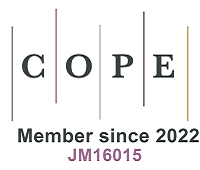Enhanced strength and ductility of high-entropy alloy via dislocation-mediated heterogeneous martensitic transformation
Abstract
The pursuit of unparalleled mechanical properties has driven the exploration of heterostructured materials in recent years. Traditional strategies that rely on tuning internal plastic strain to create heterogeneous distributions of martensite have failed to overcome the strength-ductility tradeoff in materials, despite the desirable extensive hardening effect of martensitic transformation. Here, we report a paradigm-shifting approach utilizing dislocation-mediated heterogeneous martensitic transformation to resolve this dilemma. Realized in a partially recrystallized metastable face-centered cubic (FCC) high-entropy alloy (HEA), the phase transformation from FCC to a hexagonal close-packed (HCP) structure occurs exclusively in the non-recrystallized zones during initial tensile loading, facilitated by abundant pre-existing dislocations serving as sources for partial dislocations. In contrast, deformation in the adjacent recrystallized zones, which are devoid of dislocations, proceeds through dislocation slip. The resulting heterogeneous deformation persists with increasing strain, underpinned by the emergence of unique dual FCC-HCP nanograins at localized HCP lamellar intersections in the non-recrystallized zones. Such sustained heterogeneous deformation enables full exploitation of remarkable hetero-deformation-induced strengthening and strain hardening, leading to a superior strength-ductility combination in current HEA. Our findings establish a new pathway for engineering high-performance heterostructured materials.
Keywords
Heterogeneous martensitic transformation, high-entropy alloy, strength, ductility, hetero-deformation induced hardening
Cite This Article
Wang F, An X, Wang Z, Wu W, Xia W, Ni S, Gu J, Yi J, Yang Y, Song M, Zhu Y. Enhanced strength and ductility of high-entropy alloy via dislocation-mediated heterogeneous martensitic transformation. Microstructures 2025;5:[Accept]. http://dx.doi.org/10.20517/microstructures.2025.33













